From the "dull summer" to the "gaming feast," which projects will become the key drivers?
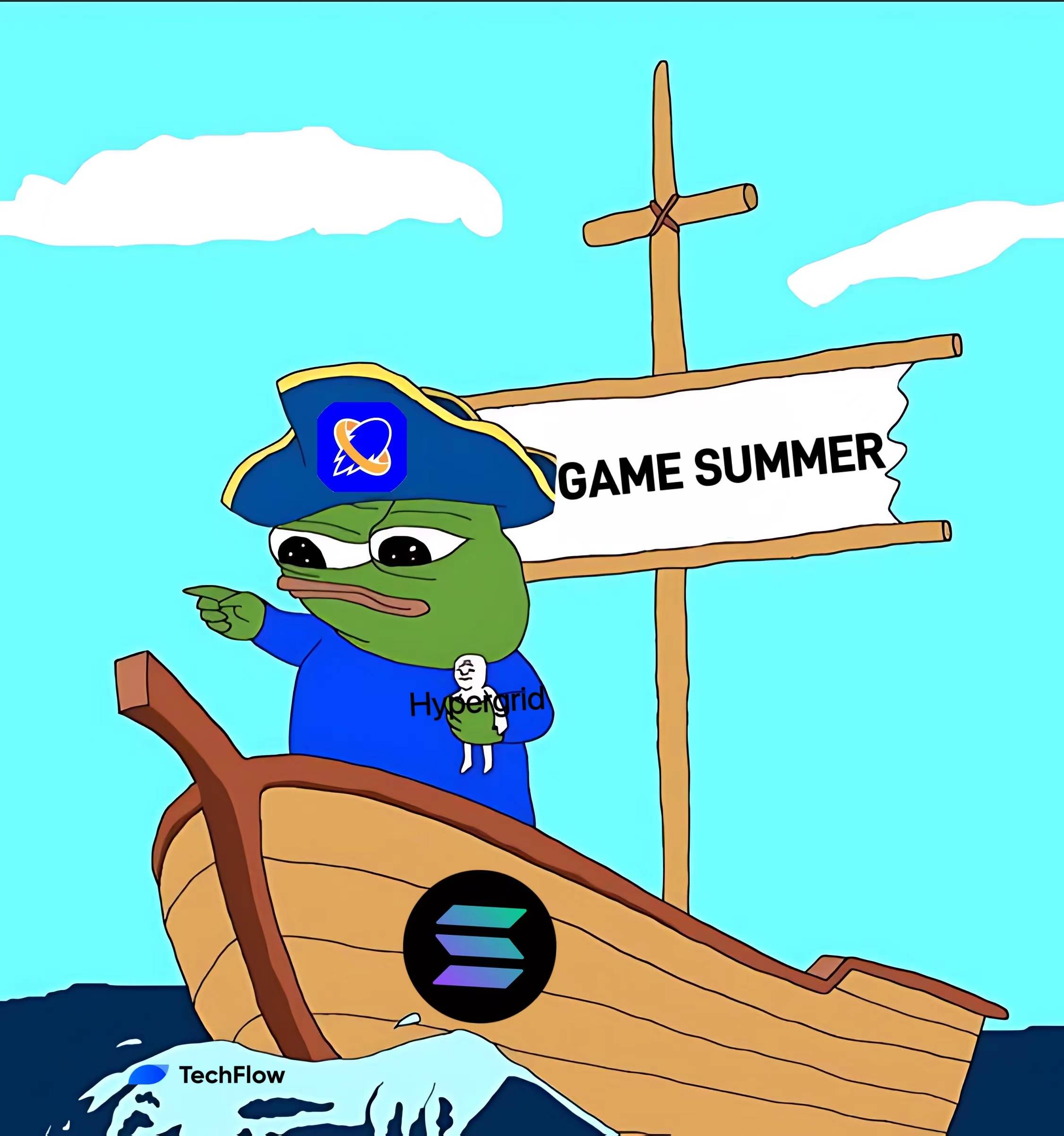
The market is dull, lacking a phenomenon-level new project to drive the narrative transition.
However, looking back, Solana is still an ecosystem worth paying attention to. User demand is evident, and trading frequency and activity have been maintained at a certain level.
When both liquidity and attention are accumulating, there is a need for an opportunity to break the dull market structure.
Currently, games on Solana seem to have been overshadowed by meme hype, but the potential for imagination is huge:
First, there are still no games on Solana that have reached the same scale as the ETH-related ecosystem; secondly, in the context of mobile and narrative rotation, the overall Solana gaming track is waiting to be activated to accommodate existing liquidity and attention.
From the "dull summer" to the "gaming feast," which projects will become the key drivers, in terms of technology, ecosystem, and funding?
Sonic, the first Layer2 built for games on Solana, and also the first modular SVM chain on Solana, may be worth paying attention to.
The project has proposed a Rollup extension framework called HyperGrid, which can combine Solana's speed and the customizability of game-specific rollups to create conditions for the explosion of the gaming ecosystem on Solana.
At the same time, in June of this year, Sonic also secured a $12 million investment led by Bitkraft, with participation from Galaxy and Big Brain Holding. The token is set to be launched in October, and expectations are high. Public information shows that Sonic is also carrying out game and partner cooperation plans, attempting to incentivize more games to enter the Solana ecosystem.
For more Degen users, Sonic has been conducting node presales in the past few days, adding more reasons to pay attention to this project.
In this issue, we will delve into Sonic, explore its rationality, and conduct research from the perspectives of product, technology, and ecosystem resources.
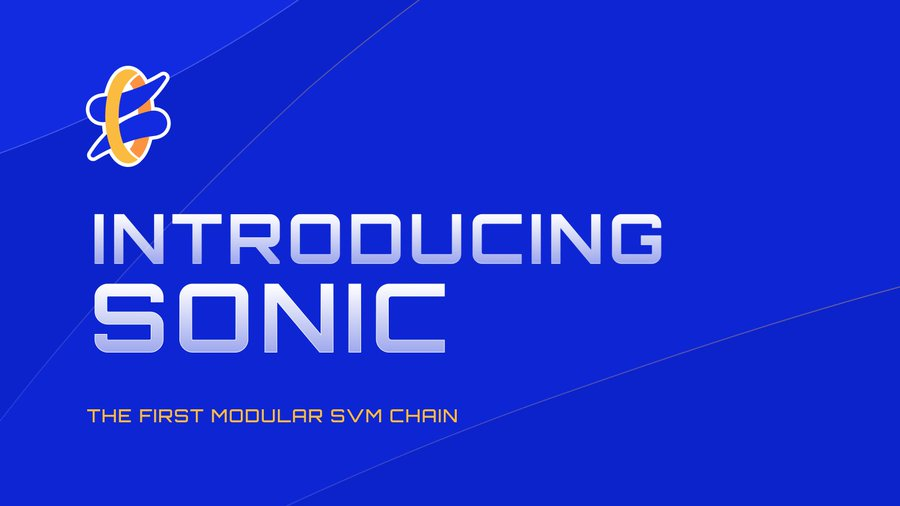
The times make heroes, Sonic's self-consistency and timing
Don't rush.
Whether a project is worth paying attention to, the "self-consistency" in demand and narrative is very important.
Before understanding Sonic itself, you must be more curious about: Does Solana, which is already fast enough, need L2? What unique capabilities does Sonic have to meet these needs?
For stereotypical impressions, it seems to be all questions at first glance. But upon closer consideration, you will discover new market opportunities.
For example, Solana's 2nd-generation mobile phone sales received 60,000 orders within 3 weeks, indicating a significant demand for mobile devices in the market. However, while mobile devices are available, the ecosystem lacks games (regardless of whether Web3 games are fun, the presence of games is the primary issue):
Currently, the main Web3 games are mostly on Polygon/BNB/ETH. Although Solana is referred to as the so-called retail chain, the game categories closest to retail users have not yet developed.
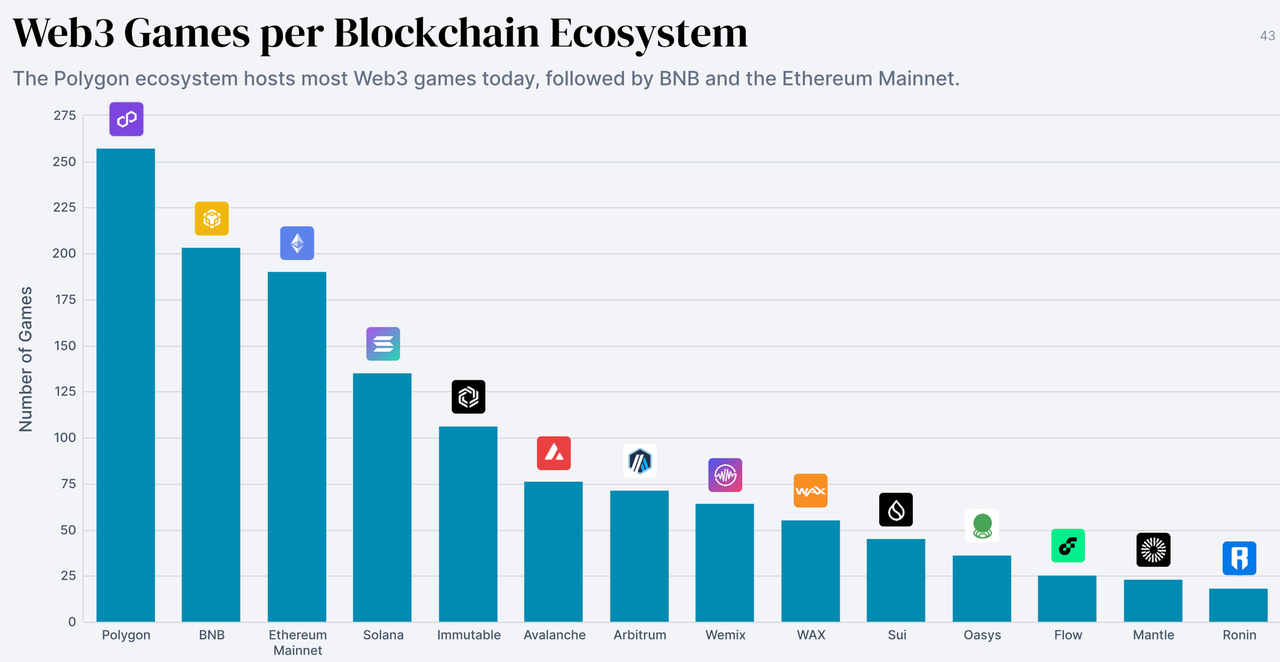
Data from DappRadar shows that none of the TOP25 UAW (Unique Active Wallets) games are on Solana; similarly, none of the TOP10 games by market value are on Solana.
This is like two sides of the same coin, where you can see the current lack of games, but it also means there is a great opportunity to provide seats for games.
As for the other question, whether Solana needs L2, in fact, from a technical, public opinion, and application perspective, there is a demonstrated need.
Technically, Solana's L1 main chain faces foreseeable performance pressure and needs a way to share the load; L2 Rollup is an option.
With the faster growth of dApps and DeFi activities on Solana, the daily on-chain transactions exceeded 200 million in January 2024, and conservative estimates suggest that the transaction volume in 2026 will exceed 4 billion.
Under this foreseeable pressure, Solana's TPS is around 2500-4000, and the average ping time of the Solana cluster fluctuates between 6 seconds and 80 seconds; when TPS becomes saturated, exceeding 4000, the success rate of Solana transactions only reaches 70% to 85%.
At the same time, when meme transactions are frequent, other applications are affected; high-frequency interactions in games are also to some extent affected by the performance of L1.
In terms of applications, some projects have already started thinking about Rollup-like designs.
Due to Solana's lack of advanced data structures for games, project developers need to manually implement them in smart contracts, making it more difficult to develop games on Solana; at the same time, the lack of a caching mechanism means that common operations in games, such as cross-transaction calls and data account access, are difficult to handle, further increasing the difficulty of game development.
Non-gaming projects, such as Pyth building application chains based on Solana, and Grass aggregating high-frequency DePIN data through zk to pack and transmit to L1, are exhibiting L2-like behaviors.
The same applies to applications (games), and it is clear that they prefer to have their own L2 Rollup, which is more conducive to capturing the value of their own fees, privacy, and achieving real-time settlement.
In public opinion, the founders of Solana-related ecosystem projects are also constantly discussing the need for L2.

From the perspectives of performance, ecosystem, applications, and communication, Solana needs a gaming chain to expand its ecosystem.
Shifting the focus from an investment research perspective, putting all this information together implies that: Whoever first addresses the needs of the Solana ecosystem will have a greater chance of becoming the next Alpha.
This is the self-consistency and timing that Sonic faces.
Hypergrid, the secret weapon for easily "one-click chain deployment"
Understanding the necessity, let's take a look at how Sonic plans to implement L2.
The uniqueness of Sonic lies in Hypergrid, a horizontal scaling Rollup architecture designed specifically for Solana SVM.
You can think of Sonic's L2 as being built on top of HyperGrid, the first concurrent scaling framework on Solana; furthermore, the name "Hypergrid" implies that it allows multiple independent grids to run simultaneously, with each grid capable of handling transactions independently, but ultimately achieving consensus and confirmation through the Solana mainnet.
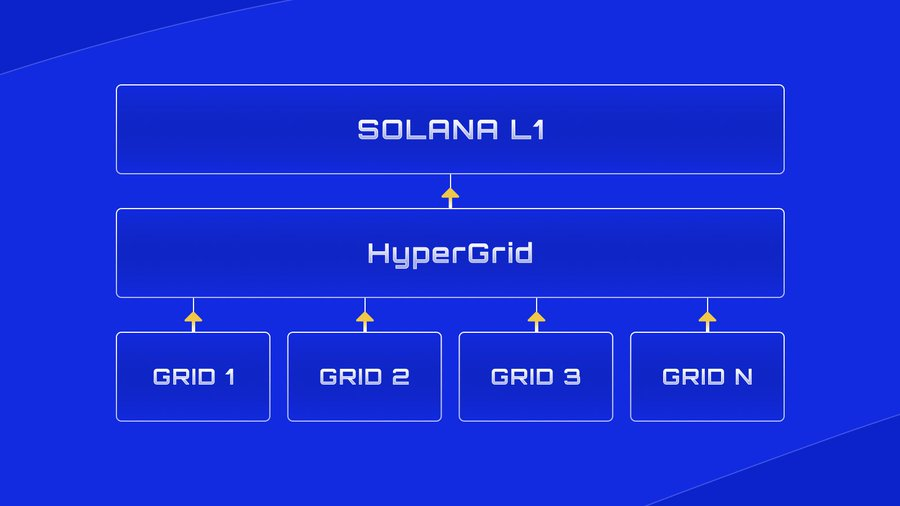
The benefit of this design is that it can greatly enhance the system's scalability and performance.
You can think of it as a "self-governing system" that is both autonomous and centralized:
Independent operation: Each grid can independently handle its internal transactions, including verification, recording, and state changes. This means that an application within one grid will not affect the operation of other grids.
Connected to the mainnet: Although grids can operate independently, the final consensus and confirmation still depend on the Solana mainnet. This ensures the consistency and security of data across all grids.
Flexible scalability: Developers can choose to use public grids or create independent grids to achieve higher performance isolation and control as needed.
If you still don't understand, a better analogy is a large shopping mall and independently operated shops.
Imagine HyperGrid as a large shopping mall, and each grid is an independent shop in the mall. Each shop (grid) can operate independently, handling its own transactions and customers (application transactions).
The real estate (Solana mainnet) is responsible for the security and management of the entire mall, ensuring that the transaction records and state changes of each shop can be ultimately confirmed. If a particular shop is particularly busy, it can open a new branch (create a new independent grid) to ensure smooth operations without affecting other shops.
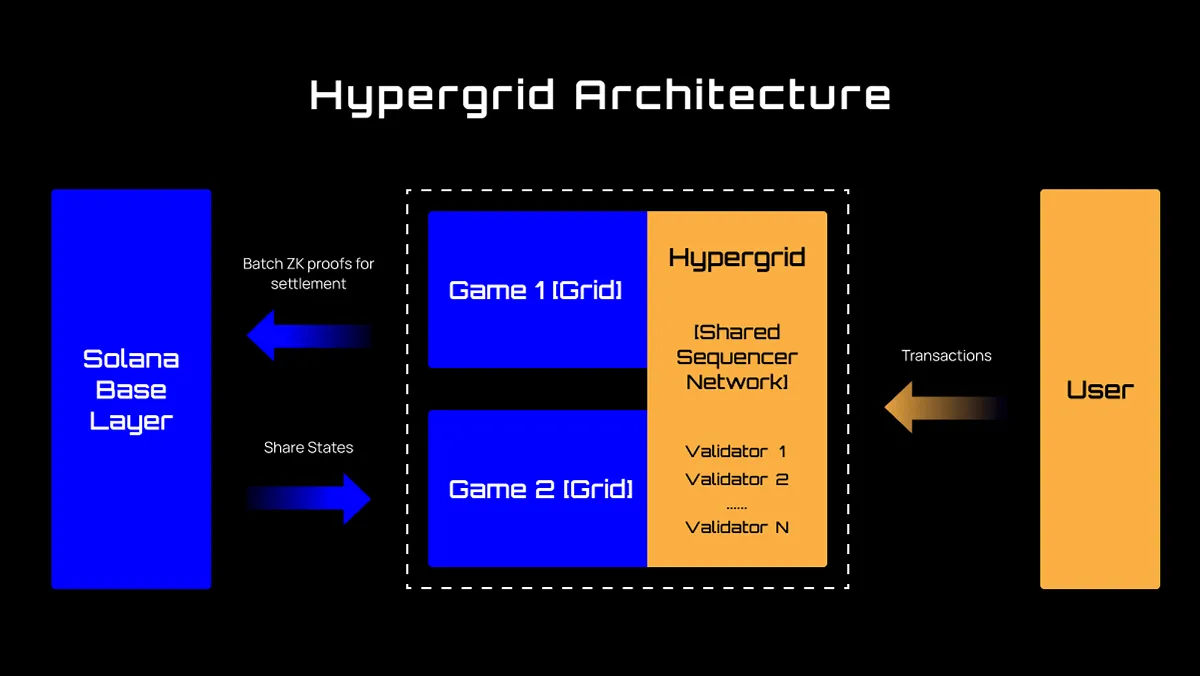
In terms of architecture, Hypergrid is actually composed of the following parts:
Solana Base Layer: Responsible for final consensus and data recording. This layer receives batch zero-knowledge proofs (Batch ZK proofs) from Hypergrid for settlement and shares state information.
Hypergrid: A shared sorter network responsible for coordinating and managing multiple grids. It also includes multiple validators, with each validator responsible for processing and verifying transactions.
**Different Grids: Each grid can be seen as an independent application or service (such as a game), handling its specific transactions and state changes.
Users: Engage in transactions with Hypergrid, which is responsible for receiving and processing these transactions. Transactions are processed by Hypergrid's validators and ultimately settled and recorded through the Solana base layer.
Having the Hypergrid architecture alone is not enough to fully realize its effectiveness; it needs some auxiliary tools to make it more user-friendly.
First is the EVM interpreter, which allows existing Ethereum-based games to be deployed on Hypergrid with minimal modifications. Additionally, Hypergrid has developed a native game engine that covers runtime loop functions, game-specific types and containers, sandbox environments, and more, reducing the various barriers to game integration, development, and debugging.
In the final stage of interacting with assets, Hypergrid also provides a complete set of payment settlement infrastructure, such as an embedded NFT marketplace, token swaps, bridging, liquidity pools, identity verification, and wallets, among other supporting tools.
Therefore, with Hypergrid and the aforementioned tools, developers can quickly build a customized Rollup for their games without having to reinvent the wheel from scratch. They can use the existing architecture and toolkits to handle all the necessary aspects of Web3 games from end to end.
The benefits to developers will ultimately spill over to all stakeholders around Solana.
Crypto players can enjoy better trading and gaming experiences without perceiving any changes in technology, only subjectively feeling that transaction speeds have increased. For the entire Solana ecosystem, the customized Rollups of applications can also reduce the pressure on the mainnet's performance, allowing project teams to be more willing to introduce more Solana games. Each game will bring users and liquidity to in-game assets, which will also permeate the Solana base layer.
It is worth mentioning that as an L2, Hypergrid's system also adopts a staking design, where validators in the network need to stake SOL to become nodes, indirectly increasing the value capture effect of SOL.
Ultimately, Sonic's Hypergrid design greatly enhances the system's scalability and performance, while ensuring data consistency and security. This allows all parties in the Solana ecosystem to benefit, and I believe it is a rational choice that multiple parties can participate in and have the motivation to participate in.
Focus beyond technology
As a L2 infrastructure project that can benefit multiple parties, technology is important, but what is more critical is how many partners are willing to join and how much they can expand their business circles.
Therefore, the resources, collaboration capabilities, community building, and market entry strategies behind Sonic are more important.
In June of this year, Sonic announced a $12 million Series A funding round led by Bitkraft, with participation from Galaxy Interactive, Big Brain Holdings, and others.

The developer behind Sonic, Mirror World, has even stronger capabilities. As early as 2022, it raised a $4 million seed round, with investments from CEXs such as OKX and Bybit. Building on this, the token launch of Sonic has further increased expectations.
On the other hand, Sonic and Mirror World have close ties to Solana.
Public information shows that the growth team, game team, and ecosystem technology lead for Solana in the Asia-Pacific region are all advisors and angel investors for the Sonic project, which undoubtedly adds legitimacy to the project.
More official organizational connections also mean a broader network and resources, making it easier to collaborate within the Solana ecosystem and pave the way for project development.
In terms of collaboration, Mirror World's application development platform SDK has already been deployed to 50 game clients as initial distribution nodes, establishing good cooperative relationships with existing games, making it easier to migrate existing games to Sonic and complete the cold start of Sonic's ecosystem.
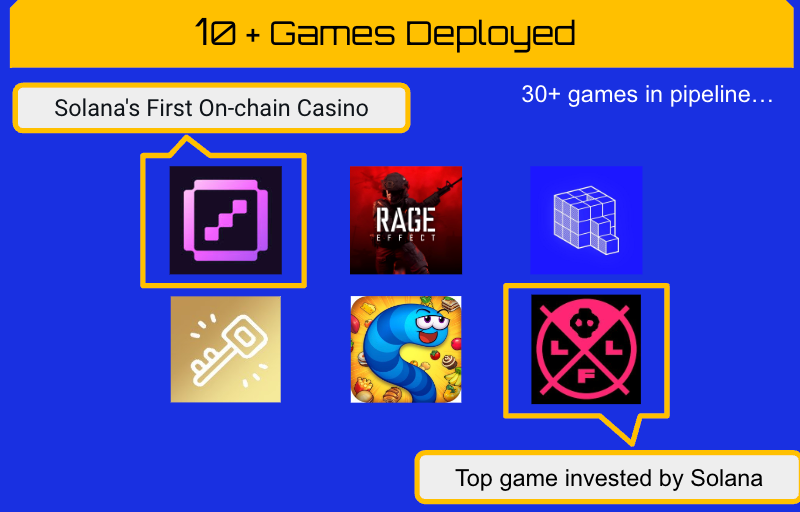
Currently, more than 10 on-chain games have been successfully deployed on Sonic's testnet. This includes the first on-chain casino, Zeebit, in the Solana ecosystem, and the top shooting game Lowlife Forms, which is officially invested by Solana.
At present, Sonic's testnet has begun to scale.
According to the official data dashboard, there are already over 2 million active wallets on Sonic. With the mainnet launch of Sonic in September, we can expect more game introductions. If a phenomenon-level game is launched, this data is likely to only increase.

However, everyone knows that Web3 games are not attracting outsiders, but rather how to activate internal users, inject initial traffic, and attention is more critical.
I have always emphasized that for an infrastructure project, the ability to form alliances and mobilize resources directly determines the project's lower limit. In this regard, Sonic's advantages are very obvious. Its key collaboration advantage is the ability to establish good relationships with non-gaming projects, providing liquidity, traffic, and security support for this chain.
For example, exchanges, DeFi, and LST projects such as Backpack, OKX wallet, Metaplex, Solayer (with over $25 million worth of SOL staked in it), and Jito have already become partners of Sonic, collectively providing blood transfusions to this L2.
In addition to partner connections, Sonic has been continuously increasing its influence in the community recently to strengthen brand awareness.
As a global L2 project, Sonic has recruited ambassadors in various countries and held community meetups in Web3 growth markets such as Turkey and Nigeria, strengthening the project's position in the minds of users and developers.
From recent actions, Sonic has accelerated its exposure frequency. Sonic has been involved in important events in the Solana ecosystem, such as Solana's hacker house and breakpoint, and has been actively participating in guest sharing in both the Chinese and global communities.
In these small actions, we ultimately see Sonic as a project with multiple VC investments, official support from Solana, global user reach, and high activity, with strong resource connections and a growing ecosystem.
More importantly, Sonic's narrative leadership (the first L2 on Solana specifically for games) and these combined factors constitute the reasons why you should pay attention to Sonic.
Current participation opportunities: HyperFuse Guardian Node NFT sale
Currently, Sonic's token $SONIC is scheduled for a TGE in October. Although direct participation in the token is not possible at the moment, we can learn about its economic model and utility in advance and participate in the upcoming node presale event.
First, the SONIC token exists for three types of roles: token holders, builders/contributors, and users and the community.
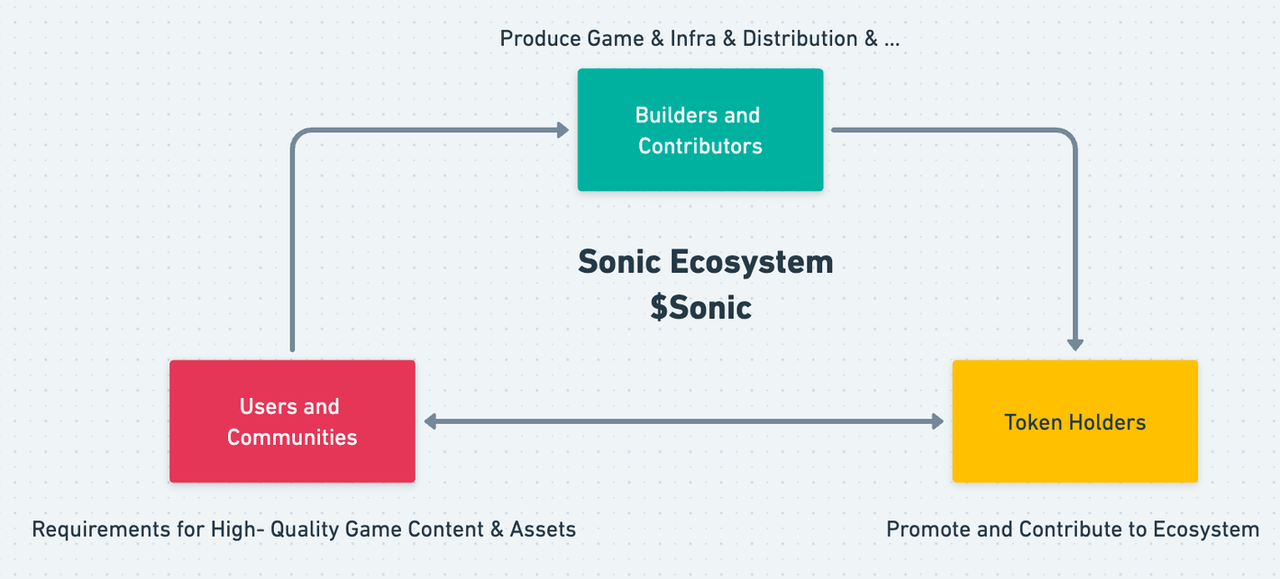
Token holders: Can exchange $Sonic for $veSonic at a 1:1 ratio, used for participating in ecosystem governance voting or delegating to different validators for additional rewards.
Builders and contributors: Can participate in the Sonic Partner Innovation Network (SPIN) and Sonic Accelerator Program to receive ecosystem support and collectively build high-quality games, infrastructure tools, or support other parts of the ecosystem's development.
Users and the community: Participate in interactive experiences in ecosystem projects. Through Sonic's activities, users can earn point rewards, which can be exchanged for tokens or other ecosystem rewards.
So, what opportunities are available for users to participate and earn token rewards?
On September 16th, Sonic will launch an event called the HyerFuse Guardian Node sale (visit here). The target of this sale is 50,000 NFTs representing the rights to operate nodes in Sonic's HyperGrid network.
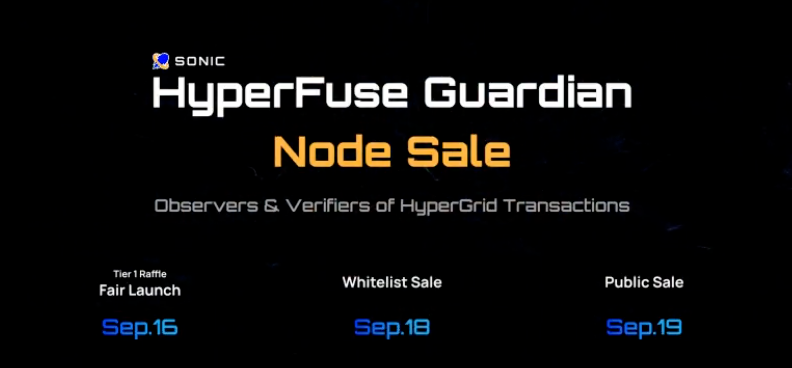
Each NFT represents the operational rights of a Guardian Node, with different levels of NFT corresponding to different node weights and reward ratios.
First, it's important to understand what running this HyperFuse Guardian Node entails.
In HyperGrid, Guardian nodes are crucial for maintaining the network's normal operation. Their main responsibilities include monitoring network transactions and state changes, detecting anomalies, verifying the correctness of the state submitted to Solana by the HyperGrid Shared State Network (HSSN), and ensuring that all operations in the Grids rollup meet security standards.
You can think of them as "validator nodes" in simple terms.
It's worth noting that even if users don't have the technical ability to run nodes, they can still purchase NFTs and delegate them to other operators to participate in the network and receive rewards.
Additionally, the barrier to running nodes is low, requiring only a browser to run the node in a lightweight manner.
Therefore, participating in the operation of the HyperFuse Guardian Node not only helps maintain network security but also potentially brings economic returns.
Token rewards: The project has allocated 10% of the tokens for rewards, with 9% for node operation rewards and 1% for network expansion rewards, such as referrals and invitations (unlocking rules for different rewards are as follows).

In terms of specific rules, Sonic has divided the presale of these node NFTs into three phases:
Lottery phase: September 16, 2024, 13:00 UTC (lasts 24 hours)
Whitelist sale: September 18, 2024, 13:00 UTC (lasts 24 hours)
Public sale: Starts on September 19, 2024, 13:00 UTC
Different nodes use a dynamic pricing mechanism, with prices ranging from $155 to $554. Purchases can be made using SOL, USDT, or USDC on the Solana network. Different levels of NFTs have different purchase limits to ensure broader community participation.

It's worth mentioning that the initial price of the node NFT sale is relatively low, starting at $155, which is not a high price, and 70% of the nodes are priced at $300 or less.
In terms of levels, the sale of level 1 nodes (the cheapest) uses a Fair Launch model, making it relatively fair for most players to participate, and at a low price, it is bound to be the most attractive. Interested players can prepare in advance to participate on the 16th.
In addition, level 2 to 8 nodes are only sold to whitelist holders, with prices ranging from $166 to $248. Whitelists can be obtained through the Odyssey event on the testnet and through partner communities.
Known partner communities include MadLads, Solayer, Send, MonkeDAO, and other well-known communities in the Solana ecosystem, as well as the broader crypto community.
Players interested in specific rules can check here for more details.
In terms of valuation, the node presale is good news for the community and retail investors, as some nodes offer lower costs than VC rounds.
In the first 30% of node sales, the fully diluted valuation (FDV) remains below $100 million, lower than the valuation of the previous VC round. This means that early participants have the opportunity to enter the project at a relatively favorable price and potentially gain appreciation.
It can be seen that the nodes also use a tiered pricing strategy. Early participants can obtain nodes at a lower price, and as the sale progresses, node prices gradually increase. This not only rewards early supporters but also provides opportunities for investors with different budgets to participate, helping to expand the community base.
Conclusion
Solana's Game Summer has yet to arrive, but the trailblazers pushing for its arrival are definitely worth paying attention to.
Sonic's strong resource connections, professional product alignment, and event activities have provided new liquidity and attention; whether it's professional players, ordinary gamers, or game developers, new, user-friendly, and highly anticipated projects will become market favorites.
However, how long it can remain a favorite depends on Sonic's own good operation and subsequent development—flowing first and speaking endlessly, iterating itself in the ever-changing market expectations and demands is the survival philosophy for Web3 projects to go further.
免责声明:本文章仅代表作者个人观点,不代表本平台的立场和观点。本文章仅供信息分享,不构成对任何人的任何投资建议。用户与作者之间的任何争议,与本平台无关。如网页中刊载的文章或图片涉及侵权,请提供相关的权利证明和身份证明发送邮件到support@aicoin.com,本平台相关工作人员将会进行核查。




